The Book on Commercial Reverse Osmosis – Facts vs Fiction
More often than not, when a company installs a commercial reverse osmosis system, they start with a system that does not meet their water treatment needs for a variety of reasons. Most times, the issue is that they simply don't know what they don't know. Such as:
- They thought they needed (as an example), 500 Gallons Per Day (GPD), so they bought a 500 GPD RO system. They failed to understand that all Commercial RO systems are rated at 500 GPD IF they run 24/7 (not a good idea), and that rating is at 77 degrees F water and 60 PSI. For every degree below 77 degrees, the system loses about 2% of its production, so if the water temperature is 52 degrees, the system would lose approximately 50% of the GPD. That 500 GPD RO system is actually a 250 GPD system… if it runs 24 hours a day! Water treatment systems are not made to run 24x7!
- When the system was initially purchased, the customer did not account for business growth therefore the system that was purchased was incapable of handling future expansion.
- A purchase was secured from a company who doesn't specialize in commercial reverse osmosis systems and, therefore, they do not have the appropriate system or proper pretreatment.
- Over the years components were added to their system from various companies who had conflicting treatment goals. This lead will lead to mismatched equipment and components.
I have been involved in the sales, service, and installation side of reverse osmosis systems for over 46 years and have to admit that I have made every mistake possible. That, in itself, makes me uniquely qualified to address this issue because I have made more mistakes than just about anyone.
“You can't put lipstick on a pig” is a quotation I use frequently. Sometimes, I see a commercial RO system that is so poorly designed and undersized that the reality is that the owner will end up spending a lot more to fix it, than if they just replaced a system.
I recently looked at a system that was evidently installed “piecemeal” and after considering their needs, we recommended they “blow it up” and start over. They had a 500 GPD reverse osmosis system and (2) 200 GPD systems. They needed 1.5 GPM for many days straight and in the real world, the system would supply less than half that… and they wondered why they had a problem.
They had a bunch of filters ahead of the reverse osmosis system and the whole thing looked like it had been built as a “hey, let's try this” project. The solution was simple, just like with any reverse osmosis system.
Any sustainable water treatment system starts with a detailed Laboratory Water Analysis. It is imperative that we know and understand what contaminants are in the water and in what concentrations so that we can remove them properly. Obviously, we need to know the TDS and pH of the water, but within that TDS, we also need to know the breakdown of the Cations and Anions. In most cases, once we have that water analysis, we will use a software program from Dow Water & Process Solutions, called “ROSA.” (Reverse Osmosis System Analysis) to determine the size and effectiveness of any system. This falls under the category of “Measure Twice - Cut Once!”
Here are the Ten Commandments for Commercial Reverse Osmosis Sizing and Application
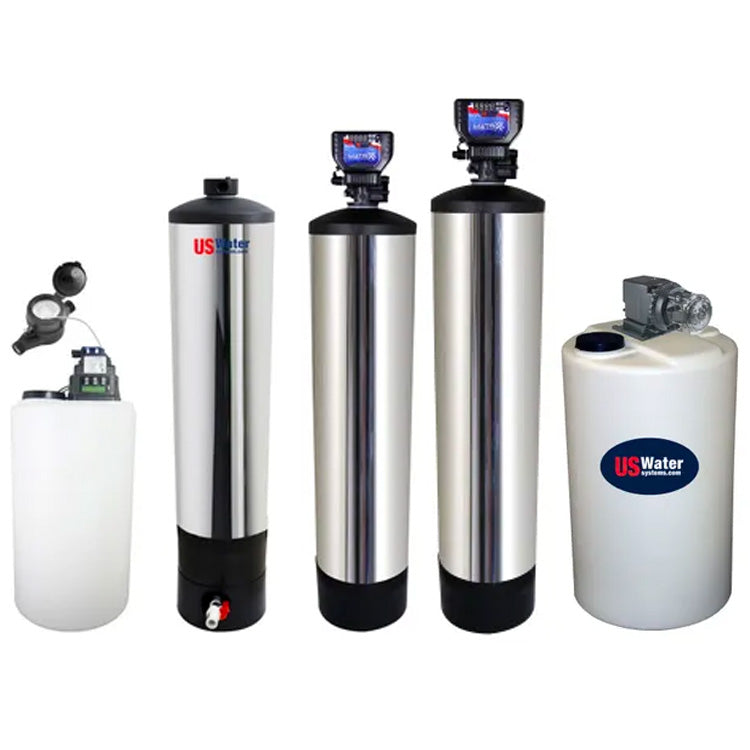
1. You start with proper pre-treatment
No matter how good the reverse osmosis system is, it won't work very long, or very efficiently, or provide high quality water without proper pre-treatment. Proper pre-treatment includes (but is not limited to) the following:
A. Iron/Sulfur/Manganese Removal for Well Water: /products/matrixx-greensand-plus-iron-filtration-system
B. Chlorine and Chloramine Removal for City Water: /products/us-water-matrixx-catalytic-carbon-backwashing-filter
C. Water Softening or Anti-Scalant Injection (Anti-scalant is the preferred method for us unless you think lifting bags of salt is an Olympic sport. It's even better than water softening and requires no salt): /products/us-water-anti-scalant-injection-system-15-gallon-tank
D. Disinfection such as ultraviolet or ozone for bacteria removal: /pages/commercial-uv-systems
2. You need to size a reverse osmosis system to the highest daily capacity needed
In the above case, they needed about 2,200 Gallons per day.
A. Ideally, you don't want the reverse osmosis system to have to run 24 hours a day to produce that quantity. It is best if you can produce that amount of water in 8 hours, meaning that the RO system will only run 1/3 of the time.
B. You can push the envelope and try to produce it in 12 hours, meaning that the system has to run 1/2 the time. Here they would need a 6,000 GPD to have it run approximately half the time or a 8,000 GPD system if it would run only a third of the time: /products/us-water-systems-defender-commercial-floor-mount-reverse-osmosis-system-2000-to-16000-gpd
C. The advantages of having a system run half or one-third of the time are numerous and include dramatically increasing the longevity and greatly reducing energy consumption. We have systems that were engineered to run 1/3 of the time that have been running for over 20 years with no pump or motor replacement and the resultant 30-40% energy savings.
3. Consider “Green Options”
"Green Options" are reverse osmosis systems that recover 75% of the water used through a Computer Controller, Permeate Flush, Ultra Low Energy Membranes and Concentrate Recycle. We offer most of these options on our systems.
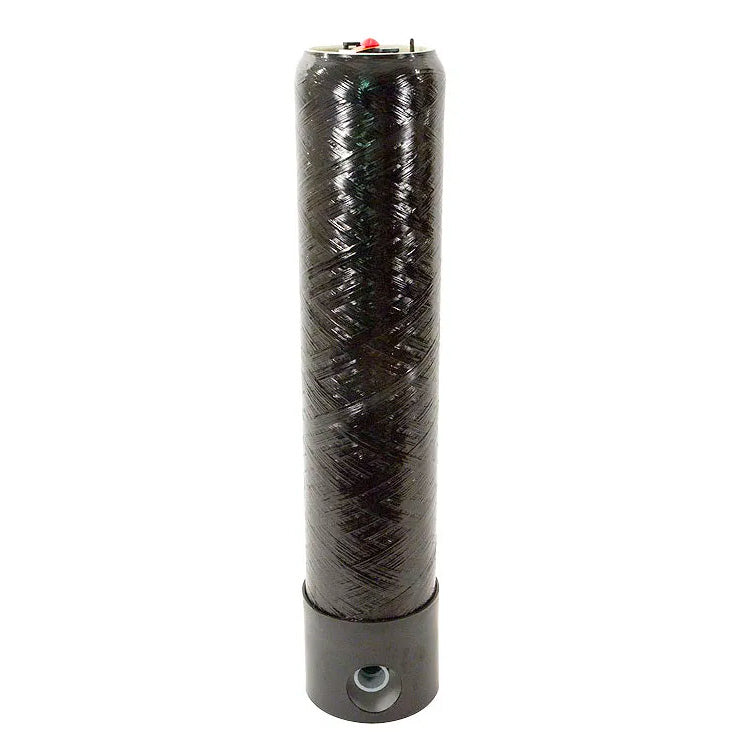 4. Is Re-mineralization necessary?
4. Is Re-mineralization necessary?
After the reverse osmosis system, you may want to remineralize if the water is used in a foodservice application. If all the water needs to be remineralized, then it is best to remineralize as the water flows from the RO system because the flow is always the same and much lower than the flow after the system.
A. This frequently means that you can use much smaller re-mineralization systems, like cartridges, instead of large tanks: /products/us-water-patriot-replaceable-cartridge-remineralization-tank
B. If you remineralize AFTER the RO water storage tank, you will have to size the tank to your highest flow rate, which could be 5-10 times what the RO produces. It is much more precise to remineralize BEFORE the storage tank.
C. Re-mineralization is an absolute necessity if the water is going to be distributed in copper pipes (especially in a home with copper plumbing). Ideally, the point of where the water is properly remineralized is at 30 to 40 PPM of Total Dissolved Solids.
D. Typically, medias called Calcite (which is calcium carbonate flakes) or Manganese Oxide is used as the media to raise the pH. This can be in the form of a cartridge or a tank containing Calcite. Whether you remineralize before the tank or after the tank depends upon whether you want all of the water to be remineralized or just part of the water.
E. We also offer Livation Hydration Technology which remineralizes, raises the pH and lowers the ORP to provide an Alkaline Water.
5. The cheapest system you can buy may actually prove to be the most expensive
Here's why:
A. While our “Green” systems recover 75% of the water, there are many competitors systems that recover only 15%.
B. Let me put that in perspective. That means that to make 2,000 gallons, you would waste over 12,000 gallons! Not only is that wasteful, but it is also expensive if you have to pay for your water and/or the electricity to pump it.
C. Many systems operate at 150 to 200 PSI while most of our systems operate at 80 to 100 PSI. Think about that: Fittings, tubing, pumps, flow meters, gauges, needle valves, and motors have a lot more stress exerted upon them at 200 PSI than at 100 PSI. TWICE AS MUCH! It affects longevity. RO systems work better and last longer at lower pressures … AND lower pressures mean less energy.
D. So you dramatically increase the life expectancy of the system and you save up to 40% on energy in the process, making that system that might cost $2,000.00 more, the least expensive system in the long run.
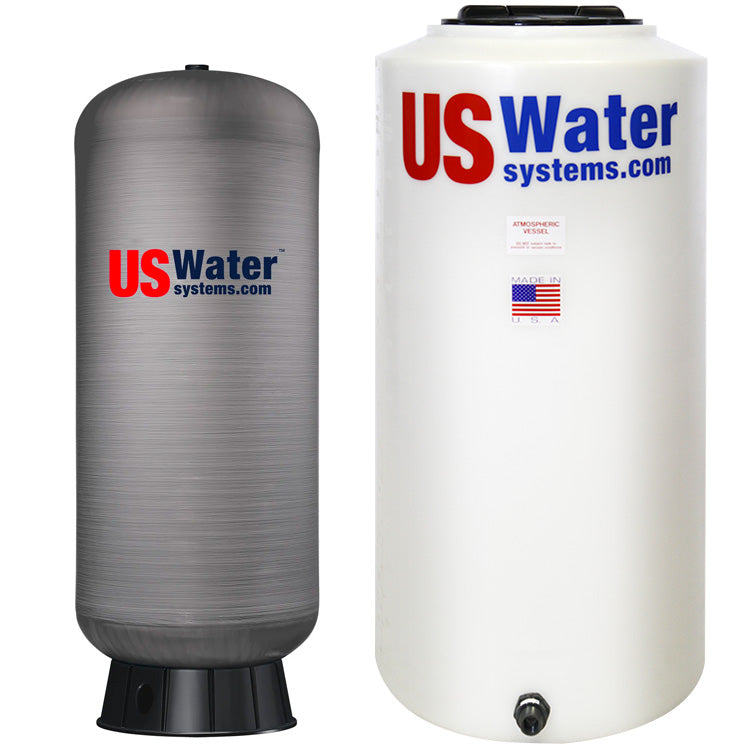 6. Do you need a bladder or atmospheric tank?
6. Do you need a bladder or atmospheric tank?
Depending upon what you plan to do with the water and how much you require, will determine what type of tank you need. In foodservice operations, especially where there may be 20-400 gallons per day usage and where extremely low TDS is not required, a bladder type tank is simple, easy and reliable. However, if you are using hundreds or thousands of gallons a day, or if you are using reverse osmosis as pre-treatment for de-ionization (DI), then you may not want to use a bladder-type pressure tank. /products/us-water-systems-composite-reverse-osmosis-tank-120-gallon
A. A bladder pressure tank has pressure behind the bladder. This is what causes the water to be expelled from the tank when it is called-for at any point-of-use.
B. As the tank fills, the pressure increases, creating less differential between the incoming pressure and the pressure in the storage tank. This results in less effective reverse osmosis and higher TDS in the permeate water.
C. Typically, water from a bladder tank verses water from an atmospheric tank will have a TDS level two to three times higher than a comparable RO discharging into an atmospheric tank.
D. The back pressure is what makes all the difference. If you were to de-ionize water that was not treated by reverse osmosis first, the cost can be 20 to 50 cents a gallon. With an atmospheric tank, the cost can be 2 to 3 cents per gallon, and with a bladder tank, the cost can be 4 to 10 cents a gallon. If you use 4,000 gallons a day, that's a big deal!
7. Make sure you have a tank that is adequate for your application
The worst possible situation is to run out of water. A reverse osmosis system only makes water at a certain pace, depending upon its' size. If you have a coffee shop that requires 40 gallons of water by 9AM and you only have a tank that holds 10 gallons, you will run out of water, unless you have a RO that can make water that fast or unless you get a bigger tank.
A. Sometimes, doorways are the determining factor. If you have a 32” door opening, then you can only get a 31” tank through it. If it is an atmospheric tank, the largest you can get through the door would be a 140 gallon tank. What if it was determined that you needed 500 gallons of storage, but only had a door opening to accommodate a 140 gallon tank? Simple: manifold several tanks together. Sometimes we have to connect 5 or 6 tanks together in situations like that.
B. Typically, atmospheric tanks range from 65 gallons to 2,000 gallons, although larger tanks are available. You are usually better off if you use (2) 2,000 gallon tanks instead of (1) 4,000 gallon tank.
8. If you use an atmospheric tank, make sure you have adequate pumping capacity
This means that if your needs are 20 GPM, you wouldn't want to put in a 15 GPM pump. Sounds simple but we see this problem all the time. Frequently we recommend a Grundfos MQ3-45 that delivers up to 20 GPM or whatever you need in-between without the use of an additional bladder tank. Additionally, if your application is in a severe environment, like extreme heat, you may need a special heavy-duty pump able to withstand extreme temperatures. In foundries and places where the ambient air can be well over 100 degrees F, it may be necessary to put a chilling loop in the storage tank. /products/atmospheric-deluxe-tank-package-with-pump-uv-disinfection
 9. Determine if you need disinfection and what type is needed.
9. Determine if you need disinfection and what type is needed.
This is especially important if you have an atmospheric tank. Airborne bacteria or other micro-organisms can get into the tank, and unless it is solely for manufacturing use, it would be a good idea to have an ultraviolet light (UV) after the pump. This assures that the water is bacterially pure.
A. While UV is generally the best choice, in some cases ozone is a better choice. This is especially true if the environment is conducive to having algae grow inside the opaque tank. /products/pulsar-ultraviolet-disinfection-system-10-20-gpm
B. In high purity applications (we will discuss that next), the water frequently is circulated in a loop where a small amount of water is diverted back to the tank and therefore back through the UV over and over.
C. In water bottling applications, an ozone generator is essential as the ozone will still be present in the water as it is bottled which keeps it bacterially pure. If you ever have opened a bottle of Aquafina (which is RO water), you will hear a little “Whoosh” which is the remainder of the ozone bubbles escaping.
d. Sometimes, timers are put on small ozone systems which are ran once a day or once a week for a few hours to just sanitize the water and prevent algae growth.
 10. Do you need high purity water?
10. Do you need high purity water?
Laboratories and other manufacturing facilities frequently need high-purity water. The purity of the water is typically referred in terms of megohm or microsiemens. 18.2 megohms is considered the highest purity (that would be 0.055 microsiemens). Most applications need water quality that is 500,000 ohms, 1 megohm, or 2 megohm.
A. Traditionally, companies have utilized tanks that have a mixture of cation and anion resin to deliver ultra high purity water. However, a properly-sized reverse osmosis system with good pre-treatment will often produce water quality so low that DI cartridges can be the most cost effective method of de-ionizing water.
B. Frequently, we install two to eight 4-1/2” x 20” DI Cartridges. Assuming RO quality of 5 PPM of TDS, each of those cartridges will de-ionize about 7,000 gallons. If the RO quality is 2-3, that doubles the amount of water that can be treated by the cartridge. /products/us-water-di-system-with-dual-4-5-x-20-di-filters-1-4-gpm
C. You will need to have proper instrumentation, such as a TDS meter, Conductivity Monitor or a quality light. These quality lights are available in 500,000 ohm, 1 megohm, and 2 megohm sizes. The light glows green as long as the water quality is above the threshold and turn red when the water dips below that threshold. /products/myron-l-754ii-resistivity-digital-monitor
D. Typically, we would install a light between two cartridges or banks of cartridges, so that when it turns red, the second bank is still delivering the requisite water quality.
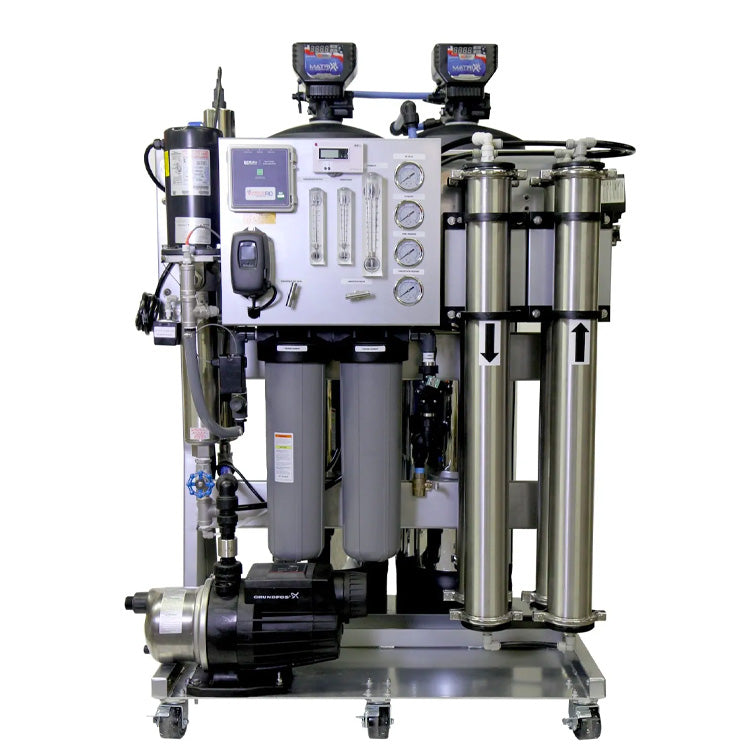 A properly-sized RO system should work effectively for 15 to 20 years. At US Water Systems, we have a large laboratory that operates 24/7/365 and has a system that was installed over 20 years ago. The membranes have been changed twice and the pump and motors are still working fine. The secret? Redundancy! They have two reverse osmosis systems, two pumps and two banks of DI cartridges. Additionally, they have proper pre-treatment.
A properly-sized RO system should work effectively for 15 to 20 years. At US Water Systems, we have a large laboratory that operates 24/7/365 and has a system that was installed over 20 years ago. The membranes have been changed twice and the pump and motors are still working fine. The secret? Redundancy! They have two reverse osmosis systems, two pumps and two banks of DI cartridges. Additionally, they have proper pre-treatment.
On the other hand, we talk to other companies who replace motors every few months and have nightmares with their systems. The devil is in the details. There is no one big secret - it's a hundred little things. That's where our experience come in. At US Water Systems, we have over 200 years of combined experience with our Certified Water Specialists and Master Water Specialists.
Like any endeavor, sizing a successful, economical and sustainable Commercial Reverse Osmosis System is like they say “The devil is in the details.” At US Water Systems, we look that devil in the eye and design systems built to last.






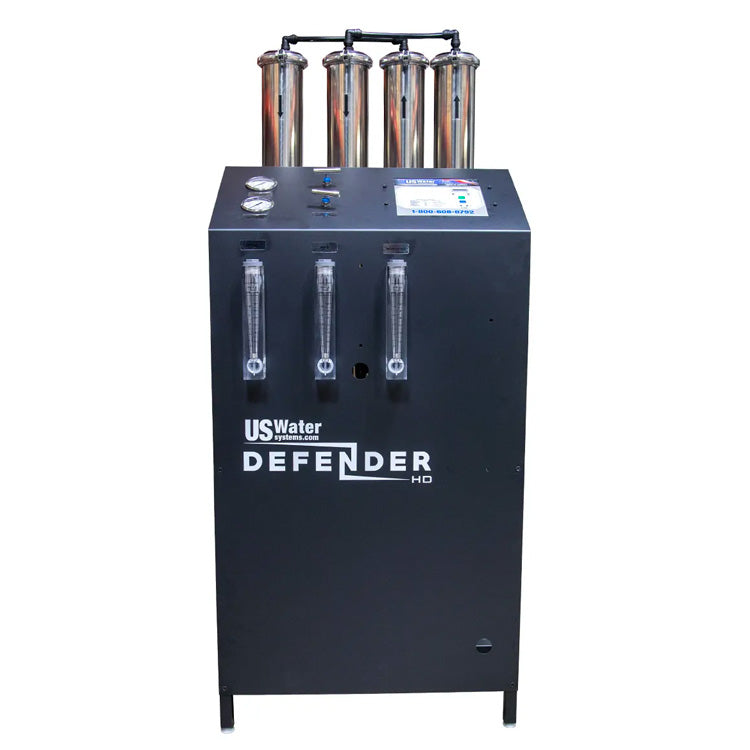
2 Comments
The numbers look good, but can I really save that much money?!
Absolutely!
Leave a comment
Please note, comments need to be approved before they are published.